
Carlisle is a cathedral city in the ceremonial county of Cumbria in England. It is the administrative centre of Cumberland Council which covers an area similar to the historic county of Cumberland.
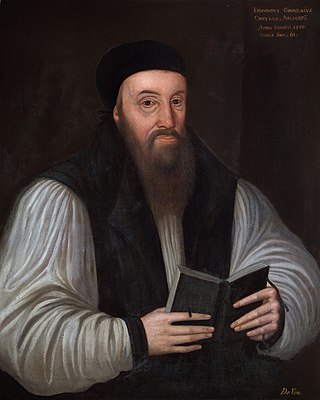
Edmund Grindal was Bishop of London, Archbishop of York, and Archbishop of Canterbury during the reign of Elizabeth I. Though born far from the centres of political and religious power, he had risen rapidly in the church during the reign of Edward VI, culminating in his nomination as Bishop of London. However, the death of the King prevented his taking up the post, and along with other Marian exiles, he was a supporter of Calvinist Puritanism. Grindal sought refuge in continental Europe during the reign of Mary I. Upon Elizabeth's accession, Grindal returned and resumed his rise in the church, culminating in his appointment to the highest office.

Whitehaven is a town and port on the English north west coast and near to the Lake District National Park in Cumberland, Cumbria, England. It lies by road 38 miles (61 km) south-west of Carlisle and 45 miles (72 km) to the north of Barrow-in-Furness. It was the administrative seat of the former Borough of Copeland, and has a town council for the parish of Whitehaven. The population of the town was 23,986 at the 2011 census.
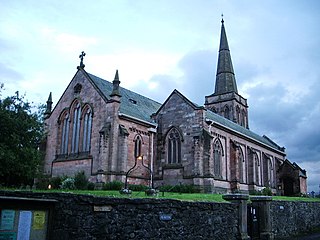
Keswick is a market town and civil parish in the Cumberland unitary authority area of Cumbria, England. Historically, until 1974, it was part of the county of Cumberland. It lies within the Lake District National Park, just north of Derwentwater and four miles from Bassenthwaite Lake. The parish had a population of 5,243 at the 2011 census.
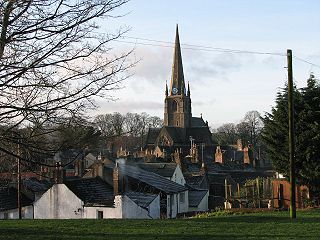
Cockermouth is a market town and civil parish in the Cumberland unitary authority area of Cumbria, England, so named because it is at the confluence of the River Cocker as it flows into the River Derwent. The mid-2010 census estimates state that Cockermouth has a population of 8,204, increasing to 8,761 at the 2011 Census.
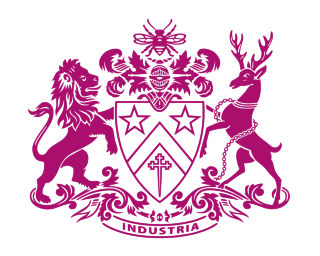
Fettes College is a co-educational private boarding and day school in Craigleith, Edinburgh, Scotland, with over two-thirds of its pupils in residence on campus. The school was originally a boarding school for boys only and became co-ed in 1983. In 1978 the College had a nine-hole golf course, an ice-skating rink used in winter for ice hockey and in summer as an outdoor swimming pool, a cross-country running track and a rifle shooting range within the forested 300-acre grounds. Fettes is sometimes referred to as a public school, although that term was traditionally used in Scotland for state schools. The school was founded with a bequest of Sir William Fettes in 1870 and started admitting girls in 1970. It follows the English rather than the Scottish education system and has nine houses. The main building, called the Bryce Building, was designed by David Bryce.
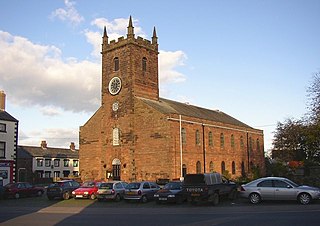
Wigton is a market town in Cumberland, Cumbria, England. It lies just outside the Lake District. Wigton is at the centre of the Solway Plain, between the Caldbeck Fells and the Solway coast. It is served by Wigton railway station on the Cumbrian Coast Line, and the A596 road to Workington. The town of Silloth-on-Solway lies 12 miles (19 km) to the west, beyond Abbeytown.

Dame Alice Owen's School is an 11–18 co-educational, partially selective secondary school and sixth form with academy status in Potters Bar, Hertfordshire, England. It is part of the Dame Alice Owen's Foundation; its trustees are the Worshipful Company of Brewers.

St Bees is a coastal village, civil parish and electoral ward in the Copeland district of Cumbria, England, on the Irish Sea.

Egremont is a market town, civil parish and two electoral wards in Cumbria, England, and historically part of Cumberland. It is situated just outside the Lake District National Park, five miles south of Whitehaven and on the River Ehen.

Worksop College is a British co-educational private school for both boarding and day pupils aged 13 to 18, in Worksop. It sits at the northern edge of Sherwood Forest, in Nottinghamshire, England. Founded by Nathaniel Woodard in 1890, the school is a member of the Woodard Corporation and Headmasters' and Headmistresses' Conference, and has a strong Anglo-Catholic tradition.

Bega is a medieval Irish saint of Northumbria, venerated primarily in the town of St Bees. According to her Life, she was an Irish princess who fled to Northumbria to escape an arranged marriage to a Viking prince. She became an anchoress and was renowned for her piety. Multiple churches have been dedicated to her in England, and her feast day is still celebrated in St Bees.

Chetwynde School is a Free school in Barrow-in-Furness, Cumbria, England. It includes a kindergarten, primary school and secondary school. It is a member of South Cumbria Multi-Academy Trust.
Ullswater Community College (UCC) is a large mixed comprehensive school in Penrith, Cumbria. It currently has around 1520 students, including about 200 in the sixth form.

Cottesmore is a boarding preparatory school in the United Kingdom, founded in 1894.

Roundhay School is a mixed, all-through and sixth form community school in Roundhay, Leeds, West Yorkshire, England. In 2020, the school received a World Class Schools Quality Mark, which requires an 'Outstanding' Ofsted assessment as well as further assessments.
The History of St. Bees School encompasses more than four hundred years of British history.

St Bees School is a co-educational fee-charging school, located in the West Cumbrian village of St Bees, England.

St Bees Priory is the parish church of St Bees, Cumbria, in England. There is evidence for a pre-Norman religious site, on which a Benedictine priory was founded by the first Norman Lord of Egremont William Meschin. It was dedicated by Archbishop Thurstan of York, sometime between 1120 and 1135.

St Bees Theological College, close to the coast of Cumberland, was the first independent theological college to be established for the training of Church of England ordinands. It was founded in 1816 by George Henry Law, Bishop of Chester, in what was during those years the northern extremity of his diocese. For many subsequent years the vicar of St Bees was effectively both the principal of the college and also its proprietor.



















